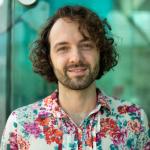
Position
Visiting Graduate Student
From
To
Research Interests
Spatial omics technology and atmospheric CO2 removal technology
Project
Spatial omics seeks to integrate the high-dimensional 'omic' data that characterizes modern biology with the 3-dimensional reality of biological samples to produce molecular resolution maps of tissues. To approach this goal, I'm building on fluorescent in situ sequencing (FISSEQ) and expansion microscopy (ExM) to enable in situ genome sequencing (IGS) for spatial mapping of genome organization.
Atmospheric CO2 removal seeks to counteract climate change by directly removing greenhouse gases from the atmosphere. Models indicate that carbon removal, alongside emissions reductions, is necessary to avoid catastrophic climate outcomes. To approach this goal, I am working to identify how microbes can be used to promote the chemistry involved in enhanced rock weathering, which leverages the chemistry of the carbonate-silicate cycle to sequester CO2.
Atmospheric CO2 removal seeks to counteract climate change by directly removing greenhouse gases from the atmosphere. Models indicate that carbon removal, alongside emissions reductions, is necessary to avoid catastrophic climate outcomes. To approach this goal, I am working to identify how microbes can be used to promote the chemistry involved in enhanced rock weathering, which leverages the chemistry of the carbonate-silicate cycle to sequester CO2.
Grad Student
Position
Grad Student, MIT, BE
From
To
School / GR
MIT - BE
Email
Paul_Reginato hms.harvard.edu
hms.harvard.edu
 hms.harvard.edu
hms.harvard.eduProject
Spatial omics technology and atmospheric CO2 removal technology.
Supervisor
Co-Advised with George Church & Ed Boyden
Date Defended